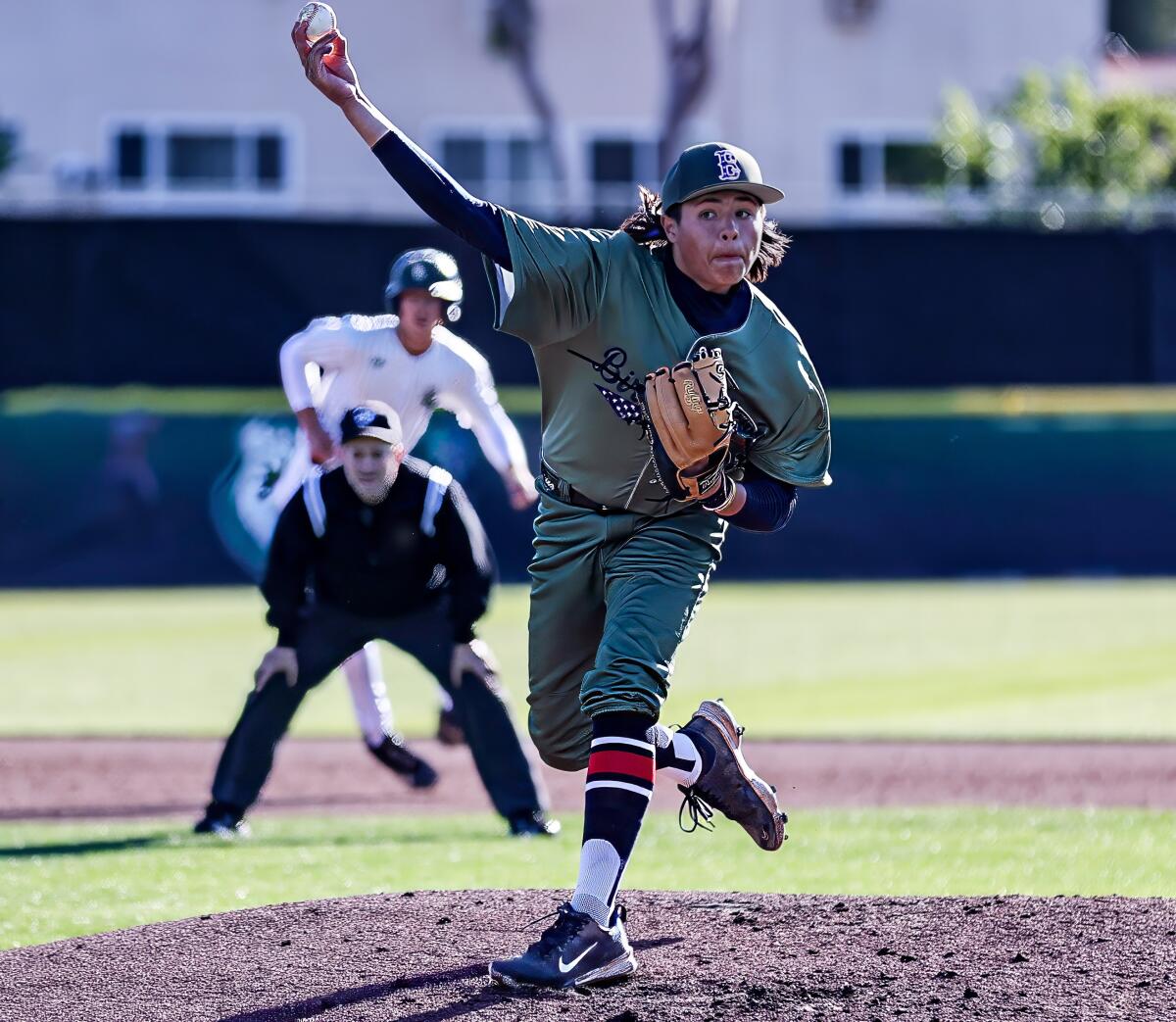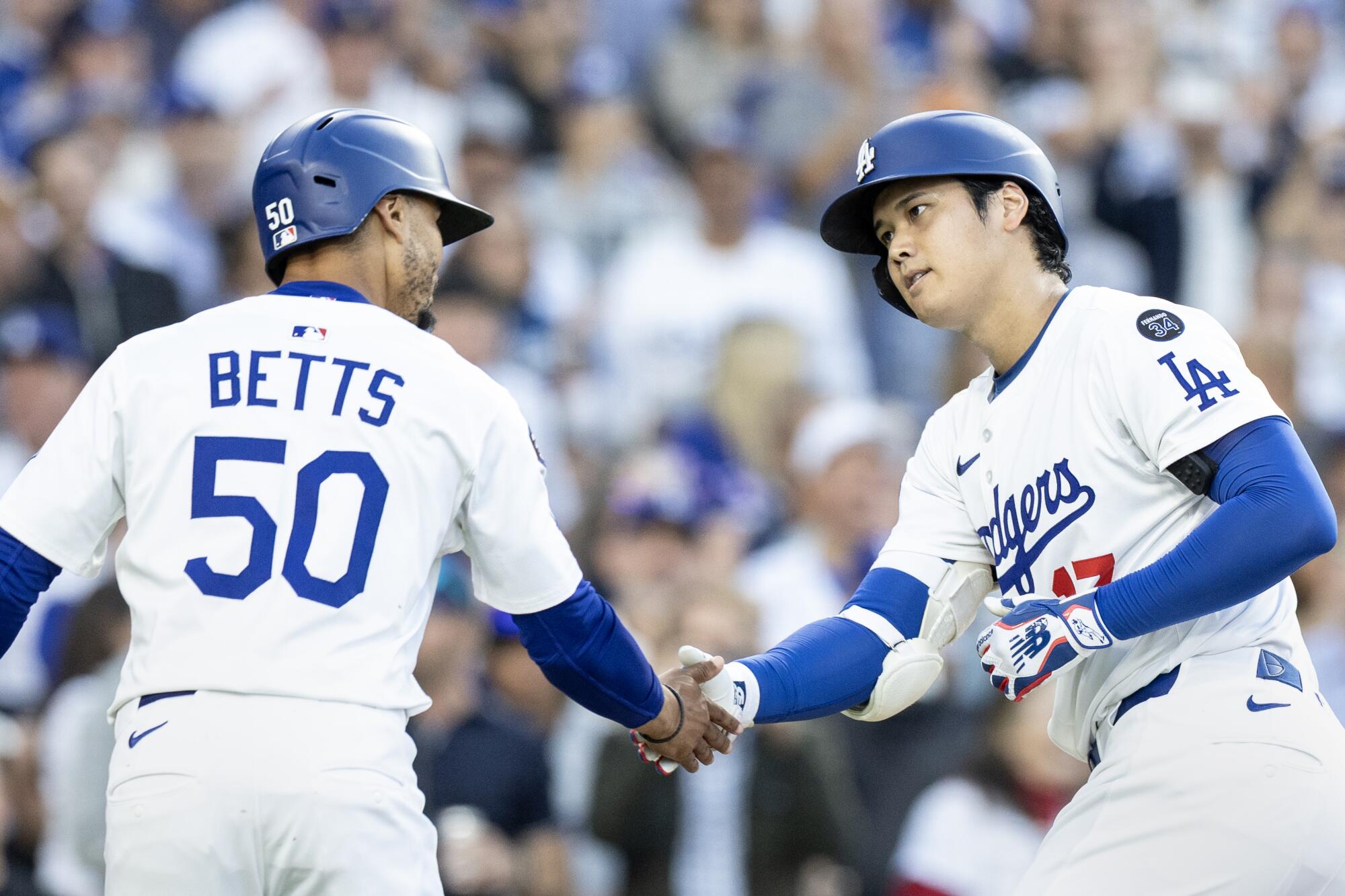Prep baseball players feeling inspired to emulate Shohei Ohtani
There are plenty of people speculating how one of the most popular baby names for those born this year and in 2026 in the United States and Japan will be Shohei after what Shohei Ohtani accomplished in Game 4 of the National League Championship Series, hitting three home runs and striking out 10 in the Dodgers’ clinching win over the Milwaukee Brewers.
What’s also clear is how much inspiration Ohtani is providing for high school baseball players who want to hit and pitch like him.
“It’s pretty crazy to do, especially as the leadoff hitter, to strike out three, then hit a home run. He doesn’t have time to regroup,” Huntington Beach junior pitcher/outfielder Jared Grindlinger said. “It’s definitely inspiring to know it’s possible to do both at the next level. I hope other kids become two-way players.”
Grindlinger might be the best two-way player in the Southland next spring. He throws fastballs in the 90s and has lots of power as one of the best players from the class of 2027. He said he has studied Ohtani’s experiences.
“He goes through struggles,” he said. “It’s not like he goes 20 for 20. It’s good to know you’re going to fail and bounce back and it’s going to be all right.”
Joshua Pearlstein, an All-City outfielder and pitcher at Cleveland, said he was in awe watching Ohtani’s performance on television.
“It’s inspiring to me,” he said. “I was in shock. It was pretty cool to see him do everything at the same time. I think the biggest challenge is working on both at practice. It’s a challenge but I’m up for that challenge.”
Pearlstein said he studied when Ohtani was in high school in Japan, how “he was putting in the work every day. It inspires me to work at home to achieve the same goals he has reached.”
Another two-way player is Birmingham sophomore pitcher/shortstop Carlos Acuna, a diehard Dodgers fan.
Sophomore pitcher Carlos Acuna of Birmingham is also a hitter.
(Craig Weston)
“It’s awesome,” Acuna said. “That’s who I want to be like as a pitcher and hitter.”
Coaches have to be careful with two-way players because you don’t want to place too much of a burden on them at practices, something that might lessen or affect one of their skills.
Dodgers first baseman Freddie Freeman told The Times: “When you’re getting older and older, you kind of veer toward one avenue. I do think you’re starting to see more at the college level and potentially letting guys [do both] because of Shohei , which is really cool because he’s changing the game. I don’t know if you’re going to see another person. Most people don’t see what Shohei is doing in between and underneath. He’s two different people and has to do it day in and day out.”
Grindlinger agrees practices are where a balancing act takes place.
“I get to do my pitching stuff first, then my hitting stuff afterward,” Grindlinger said. “Or my dad will throw to me afterward. You have to plan around it. Sometimes I can’t do heavy lifting because I have a bullpen day. It’s definitely a challenge but a fun one.”

